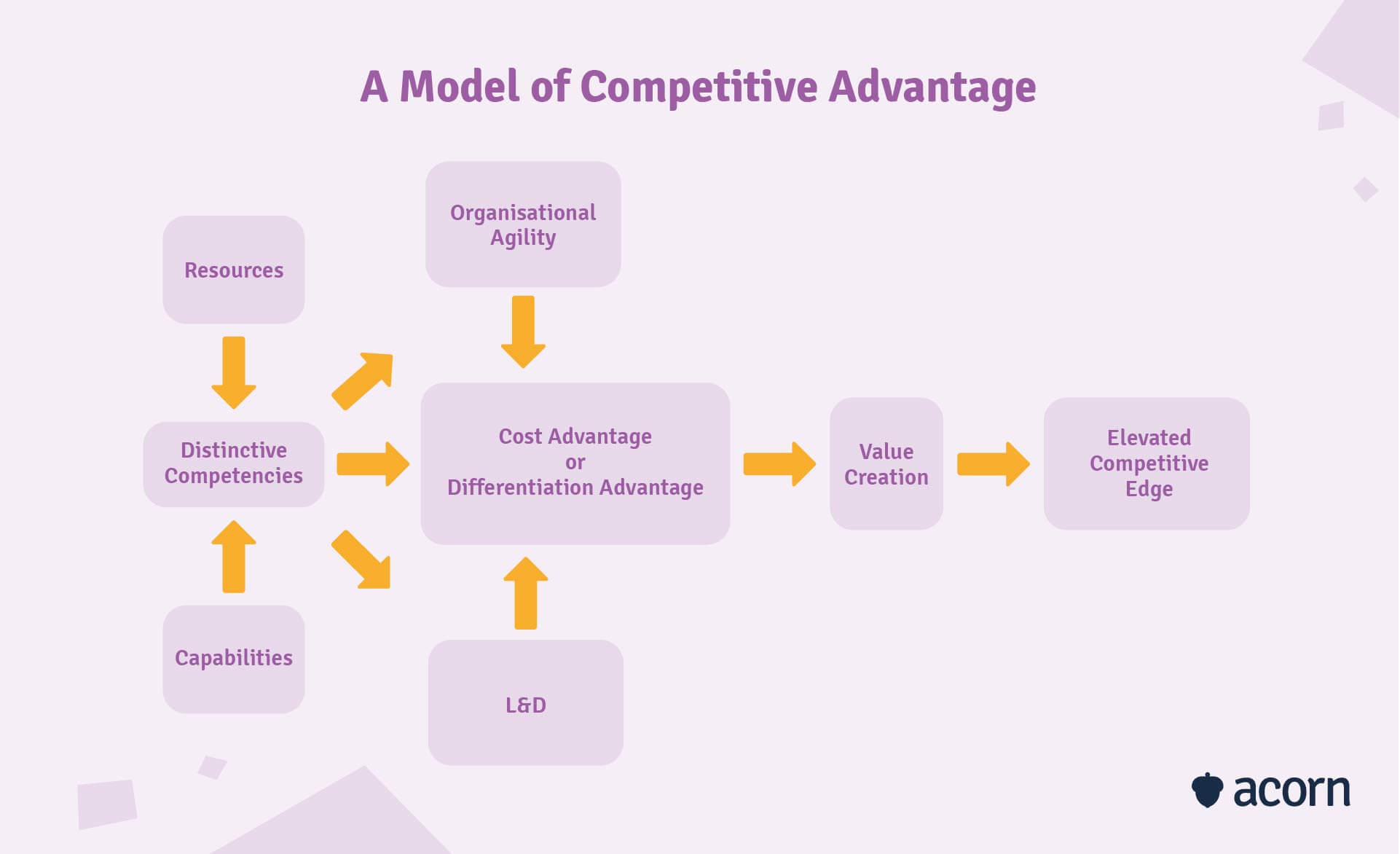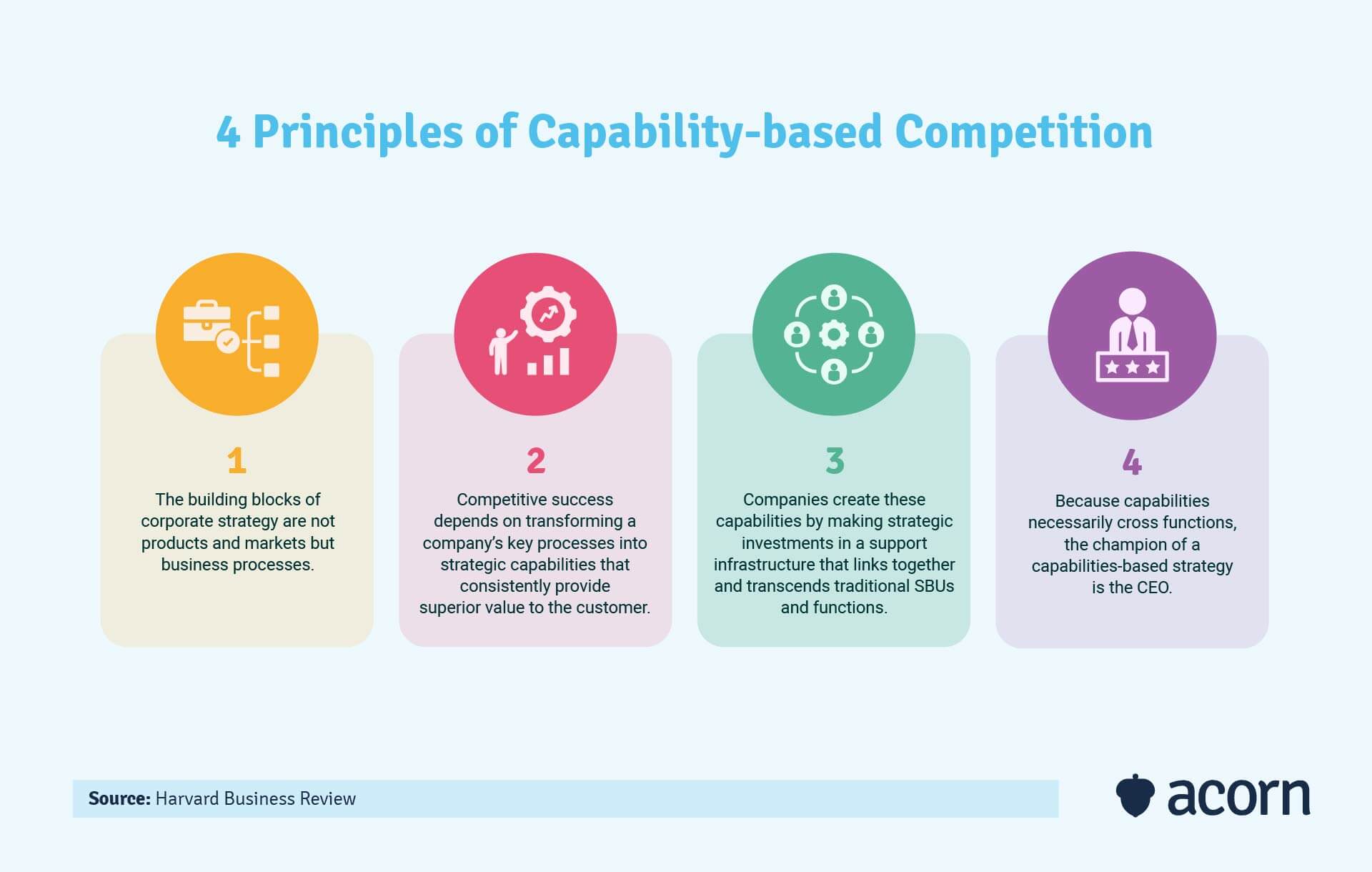Competency vs Capability: What’s the Difference?
Reading Time:

Lead the pack with the latest in strategic L&D every month— straight to your inbox.
SubscribeCompetency refers to the level of skill towards a task while capability is the capacity to perform a task.
Both speak to human abilities, but what is the difference between a capability and competency in the workplace?
In short, one is a measure of effectiveness and the other evaluates proficiency. The long story: A capability is a group of skills, knowledge and tools that get work done. Competency assesses how well those skills, knowledge and tools are used to get that work done.
Still confused? We explain more—plus why capabilities and competencies both matter in the workplace—in this article.
What is a competency?
Competency is a measure of how someone performs a set of knowledge, skills and behaviours to successfully carry out a task in the workplace.
As a measure of an employee’s ability to perform the work expected of them in their job role and to the organisation’s standard, competencies are generally used to assess capabilities for succession planning and talent decisions.
What is an example of a competency?
The Learning and Performance Institute (LPI) Capability Map has five measures of expertise:
- No experience. Speaks for itself, you simply don’t have experience with the capability.
- Foundational. You have use the capability with guidance.
- Proficient. You can use the skill by yourself.
- Advanced. You support others in developing the capability.
- Strategic. You use the capability to set strategy and business practice.
These are assessed against what performance should look like in different job roles. The more senior the role, the more complex the skills, knowledge and behaviours expected of an employee.
What is a capability?
A capability is a grouping of critical knowledge, skills, tools and behaviours that result in organisational success. In the workplace, it defines what is expected of employees in various job roles in order to achieve strategic business goals.
What is an example of a capability?
Capabilities describe a tangible outcome. A few examples of a capability include:
- Deliver results
- Manage relationships
- Decision-making
- Service commitment
- Project management.
Organisational capabilities vs competencies
Perhaps the biggest difference between capabilities and competencies is how they’re used in an organisation. Organisational capability usually starts with the CEO. When dealing with a new future of work, the CEO has to consider how their company can optimally use cash flow and people to carry out strategy.
If the CEO uses competencies to plan for the future, they’re setting a fixed goal. There’s cap on competency, an upper limit to the standard the organisation is capable of. Not to mention competency can’t be a strategic driver since a) it’s limited to certain areas of expertise and b) competence needs an outcome against which it can be measured. Ergo, it’s much better as a measure of performance.
But if they take a capability-led approach, the CEO can build a framework for performing in an uncertain future. This is because capabilities are stable and not impacted by the complexities of the business environment. They’re also made to measure for the ideal workforce, focusing on the tangible outcomes of each individual’s work.
This is a big reason behind why we pioneered the performance learning management system (PLMS). Legacy LMSs have perpetuated the idea that the solution is to push more content based on skills taxonomies. This fails on two fronts; one, it bases learning on skills, which routinely expire, and two, it overwhelms learners with irrelevant training.
A PLMS is based on a foundation of capabilities; content is curated for learners to match the specific capability needs of their role. Add competency as a measure of capability (and given capabilities are directly tied to business strategy), you’re able to prove business impacts through performance improvements.
Our PLMS can also capture interactions happening outside the platform—transforming things that are already happening in your organisation into shareable learning assets. That furthers the contextual learning opportunities you can offer, facilitating faster knowledge transfer.
And you want to focus on organisational and employee capability because it is the strongest link to the CEO’s focus (cash flow, people, strategy). Capabilities ensure we have the right combination and number of skills, knowledge, and attributes—specifically in the right people and roles to deliver on high-level outcomes.

Organisational capability vs employee capability
There’s little difference in how capabilities look and are described at the organisational and employee level. It’s more about how they’re used.
- Organisational capabilities link directly to the CEO’s focus for the business. They’re talked about in terms of resources for future-focused strategic workforce planning and business planning.
- Employee capabilities refer to the attributes of an individual. While still focused on future needs, it’s more about the needs of an employee in their role, team or career.
Really, capability and competency are two sides of the same coin. An organisation can’t be successful if its employees aren’t competent, and developing employee competence will be negated by an organisation that isn’t held to standard.
It’s easy to blame an underperforming employee. But the environment in which they are learning new skills and abilities is probably the root cause. Competitive advantage comes from developing and managing employee capability and competence to achieve organisational capability.
Why are capabilities important to business?
Organisational capability focuses on the strategic use of certain resources to reach a defined outcome. Those resources are usually a combination of tools, processes and people. So, while people perform the capabilities, how the organisation manages their individual set of skills and knowledge to gain market edge is key.

Capabilities underpin any training and development program you offer. We say any training program, because all L&D activities in your organisation should have some kind of return on investment.
You want L&D to be seen as a profit driver, not a cost centre, right? Consider some of the KPIs that business leaders want to see: Profitability, process improvement, agility and more effective teamwork to name a few.
If capabilities provide a desired business outcome, then it stands to reason you should be building training programs to develop them. This has the added benefits of ensuring:
- Learning activities are prioritised by business impacts (say, capabilities you’ve found to be at risk in your workforce)
- You can replicate a successful development pathway or find the issues in one that didn’t yield results
- Training is proactively solving and/or reducing business issues in the long-term, not just reacting to problems after the fact
- You can show a quantifiable impact to not offering development.
It also means employees have a guide of what is required for them to succeed in their job role, team and the organisation. There’s no arguing with feedback in performance reviews, because they are based on the skills, knowledge and behaviours that you’ve defined as crucial to success. Change management is also made much easier with this level of transparency, too.
Why are competencies important in the workplace?
The measure of capability success is usually the less tangible, almost intangible part. That’s where competency comes in as a way to evaluate performance.
Competencies define performance management
Of course, the most common use of competencies is in performance evaluations. It’s the best gauge of an individual’s performance against what you want performance to look like.
Managers can use competency to better understand the specific skills required for an employee’s role, as well as the knowledge and behaviours that will help them meet future job expectations.
A competency model helps:
- Benchmark performance across capabilities and job roles
- Develop shared understandings of capabilities and performance
- Design timely interventions for undesirable behaviours
- Inform succession planning and workforce decisions.
Competencies power self-assessments
Piggy-backing off performance evaluations, competency helps individuals assess their own work. We’re all human beings, which means there is a certain bias that we apply (positive or negative) to our abilities.
Organisational competencies force us to see ourselves in an objective light. Say one of your capabilities is Demonstrate Accountability. We’d all like to think we do that. But if “take responsibility for own actions” is the foundational competence expected while “help develop effective systems for establishing and measuring accountabilities” is the advanced end of the spectrum, it gives employees more nuance with which to self-assess.
That also means people aren’t just looking at their skill statements or prior learning experiences as evidence of their capabilities in practice, but rather the context in which these need to be applied and built upon. Regular self-assessments encourage employees to seek out informal learning opportunities, supporting a coveted self-sufficient learning culture within your organisation.
Key takeaways
While they’re often used interchangeably, capability and competency have very different meanings and uses. A capability is a combination of behaviours, skills, processes and knowledge that affects an outcome. Competency is the measure of how a person performs a capability.
Both can be developed, but only one has strategic impacts. Competence is best used to support employee development. Capabilities shape larger workforce and business planning tasks, like leadership development, recruitment and resourcing.
In the next article, we deep dive into the difference between and importance of capabilities, competencies and skills.